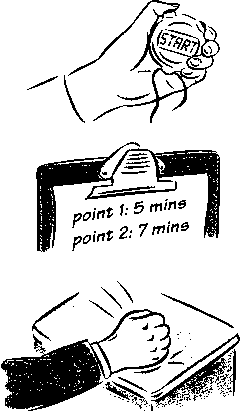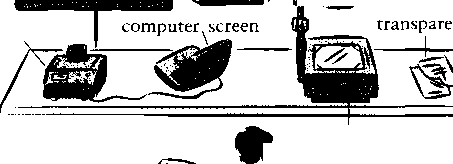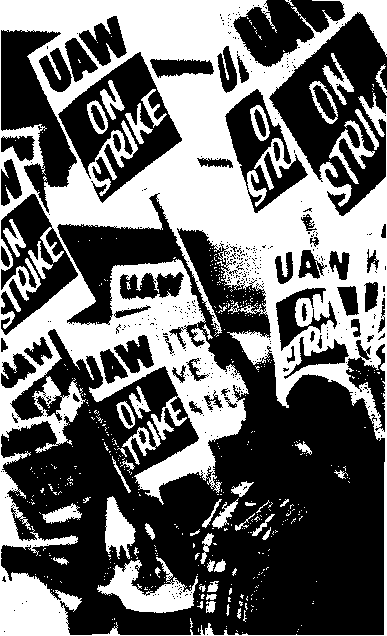
- •Vocabulary
- •Introduction 8 jobs, people and organizations
- •9 Organizations 2 32
- •[3 The Internet and e-commerce
- •Q] Sales and costs
- •2| Telephoning 3: messages 108
- •Introduction
- •Industry
- •Innovation and invention
- •Innovation and invention
- •McGrew is vice president of (a development/development) and product planning.
- •Electric light was (an invention/invention) which enabled people to stay up later.
- •Indian Rice Research Centre. I’m in charge of research (5)
- •I love (14 technological) , using scientific knowledge (15) improve
- •If he goes on undercutting us, we
- •It’s a terrible place to work. We have to make 30 calls an hour, with few breaks.
- •Invalid entry.
- •6 Volkswagen’s sales rose to 1,058,000 cars from 996,000 a year earlier.
- •The materials used in the boats, and the boatbuilders’ salaries (overhead cost / cogs)
- •Which product has the highest level of profitability as a percentage of its selling price?
- •Years of on investment in Britain’s railways have left them in a very bad state.
- •Planning the concert, they found they had forgotten to the singers,
- •A loan that a company has to repay to a bank over five years is a long-term liability.
- •Don’t want to have the situation where I’ve spent more than I’ve put in.
- •On the savings account, what’s the percentage you pay to savers every year?
- •Peter is 26 and is wondering whether to join his company pension scheme.
- •30 Years ago
- •20 Years ago
- •Petrol prices set to skyrocket
- •Sterling plummets as us dollar weakens
- •Paradiso president axes finance minister /
- •Here the male managers talk about the market as if it was some kind of battlefield.
- •7590 W Charleston Blvd
- •Senior Partner e-mail: kesposito@ace.Com
- •Voicemail
- •That’s strange. Their switchboard isn’t big enough to handle all the calls they get.
- •That’s ridiculous! a company with 500 employees, but no one answers the phone.
- •Switchboard operator: Sorry to keep you waiting. ... I’m putting you through.
- •A: It’s been good talking to you. I’m going to have to go. I’ve got to go to a meeting.
- •It was good to hear from you again. The following pages give details of the latest additions to our range. If you require any further information, please do not hesitate to contact me.
- •I’m pleased to announce another good year for shareholders of this company.
- •I know this sounds crazy, but how about giving away 100,000 free samples?
- •I recommend to shareholders that you accept Megabook’s offer for our company.
- •Off: to show how important and clever they are. The chair should keep things
- •I’ve been asked to chair a meeting about the Christmas office party, but I’m incredibly nervous as I’ve never chaired one before. Is there a secret for success?
- •The combined resources of our two organizations will allow us to achieve great things.
- •It could sound monotonous and boring if you speak from a complete, prepared text.
- •They add visual interest, provide you with support and help the audience follow you.
- •Reforms 4 pressures 6 economy
As you can see, this prototype is far in advance of anything we’ve done before.
Here are some typical patterns for demand and supply in the widget industry.
I’m going to give each group a series of problems faced by an imaginary company, and I want you to suggest solutions.
Now is the right time to get out of company shares and invest in property.
The combined resources of our two organizations will allow us to achieve great things.
The first postage stamp in the world was the Penny Black in 1840.
The parachutists will come in at 08:30 and land in two waves, here and here.
The X300 has the most advanced features of any car in its class.
Here are reasons for the advice given in B and C opposite. Match each reason (1-10) to a piece of advice (a-j).
If you drop the cards on the floor, you’re in trouble.
It could sound monotonous and boring if you speak from a complete, prepared text.
It will help you adjust the content of your talk so that it is suitable, for example not too easy or difficult.
It will help you to keep control, and avoid people interrupting if you don’t want them to.
It will help your audience follow the logic of what you’re going to say.
It will make you feel more at ease at the beginning, when you may be nervous.
It will reassure people that they are in the right place, and provide a focus for the beginning of your talk.
They add visual interest, provide you with support and help the audience follow you.
You can ask for changes in the seating plan if necessary.
 They
will be able to tell you if anything is unclear before the
presentation.
They
will be able to tell you if anything is unclear before the
presentation.
Over +o upu
Have you ever given a presentation? What type was it?
In your experience, what makes a good/bad presentation?
Presentations 2: mam part
Don’t
digress (talk about things that have nothing to do with the
subject), unless you have a particular purpose in mind.
Finish
on time. Don’t run over. It looks bad if you don’t have time to
finish all your points and answer questions.
Dos
and don'ts: timing
Melanie
Kray is giving more advice about presentations
a
Start on time.
Don’t
wait for
latecomers.
Plan
how long you’re going to spend on each point and keep to these
timings.
Don’t
labour a particular point (spend too long on something).


Dos and don'ts: voice
f Project your voice to the back of the room, but don’t shout. Don’t ask if people at the back can hear. Check the volume (loudness) of your voice beforehand, g Use a microphone if you need one. Don’t hold it too close to your mouth, h Whether using a microphone or not, speak in a natural tone of voice. Don’t speak in a monotone (on the same level all the time). Vary the pitch (level) of your voice.
Rapport with the audience
Experts say that you can gain the audience’s attention in a presentation by:
telling an anecdote (a story, perhaps a personal one).
mentioning a really surprising fact or statistic.
stating a problem.
asking a question.
Of course, it is important to respect the cultural expectations of your audience. (See Units 45-7)
Key phrases: main part
Anne-Marie continues her presentation:
‘OK. To begin, let’s look at the first type of skills that consultants need: technical skills. Of course, related to technical skills is a good general knowledge of management subjects ...
But I’m digressing: let’s get back to the technical skills themselves ... That’s all I have time for on technical skills.
Let’s move on to the second area: interpersonal skills. As you can see on this transparency, there are two key areas in relation to interpersonal skills ... I think that covers everything on interpersonal skills.
Time is moving on, so let’s turn to the third area: people management issues.’
Melanie recently went to a presentation where the speaker did not follow her advice. Match each of Melanie’s thoughts (1-7) to the points (a-h) in A and B opposite.
(Why is he yelling like that? The room’s not that big! )
He’s already said that three times. )
Çl know there are people who want to ask questions, and there won’t be time. )
( He’s really droning on: there’s no life in his voice and everyone’s asleep. )
The sound of his breath in the microphone is really annoying.)
(I don’t see what this has got to do with what he’s trying to say.
( Get on with it! If people turn up late, that’s their problem. )
60.2
OK.(For begin"), (let welook for) the most basic product in our range.
Of course, (related with product specifications ) of our basic model is the issue of product performance.
But (I ’m a digression): (let’sTget back on) the product specifications themselves.
That’s all Q I’m having time for) on product specifications. ( Let’s moving on ) to our mid-range model.
( As you can be seeing") on this transparency, there are two key features I want to talk
about/in relative to) our mid-range model.
I think that covers up everything ~J'on our mid-range model.
7
ÇTime is moved on), so Çlet’s^turn up to ) our top-of-the-range product.
Over +o ipa
How are people expected to dress for different types of presentation in your country? What do people think about humour in presentations?
Presentations
3: closing and questions
Dos
and don'ts: body language
Melanie
gives these tips on body language.
Make
eye contact: look at each person in the audience for about a
second, before moving on to the next person. Don’t concentrate on
just one or two people.
Don’t
speak to the equipment or the screen: face the audience at all
times.
Smiling
is fine at appropriate moments, but not too much.
Use
gesture (hand movements) to emphasize key points.
Stay
more or less in one place: don’t move around too much.
Avoid
mannerisms (ways of moving and speaking which you do repeatedly
without realizing).
A
^ l\0
^handouts
Key
phrases: closing and dealing with questions
Anne-Marie
is bringing her presentation to a close:
‘Let
me sum up. Firstly, we looked at technical skills, secondly, at
management skills and last, but by no means least, at interpersonal
skills. In my view, the secret for success in the future is going to
be interpersonal skills. That brings me to the end of my
presentation. Are there any questions?’
Here are some phrases which can be useful when answering questions:
a That’s a fair point. I know that some consultants don’t have a very good image. But I think that Gem Consultants have helped companies reduce costs and increase profits enormously, b That’s confidential. I’m afraid I’m not at liberty to tell you.
c That’s not really my field. But I can put you in touch with someone in my organization who is working on Internet applications, d The questioner would like to know what sort of background the people we recruit usually have. Is that right?
e Well, I think that goes beyond the scope of today’s presentation. Today I wanted to concentrate on consultants’ skills, not go into particular case studies in consultancy, f I’m afraid we’ve run out of time. But if you’d like to come and discuss that with me now, I’ll try and give you an answer.
If a member of the audience didn’t hear a question, they might say:
‘Sorry, I didn’t catch the question - could you repeat what the questioner said?’
Anne-Marie ends the presentation by saying:
‘I think that’s a good place to stop. Thank you for listening.’
|
|
|
- whiteboard |
• |
|
|
blackboard - |
• |
|
— ^ |
ÆL |
bullet points ■— screen ■
Visual aids
Melanie sometimes uses these visual aids when giving presentations:
flipchart
projector
overhead y —projector


Which words from A and B opposite could the underlined words refer to? In some cases there is more than one possible answer.
But don’t overdo it. It can seem insincere (not real).
Again, don’t overdo it. Look round at everybody in the room.
Don’t let these dominate the presentation. People have come to see you, not the equipment.
Do not use continuous text on these.
Do not use one in a large room because people at the back won’t be able to see it.
Don’t look at it or the screen behind you: face the audience at all times.
Have a backup plan if it fails to work.
Keep them under control. Remember, for example, that pointing with your finger is rude in some cultures.
Make sure there will be enough of them for everyone and make sure that they reach everyone in the room as some people tend to keep them without handing them on.
Some of them, for example putting your hands in your pockets or running your fingers through your hair, really upset some people.
Match these questions from the audience (1-6) to the answers (a-f) that Anne-Marie gives in C opposite.
Sorry, I didn’t catch the end of the question - could you repeat what the questioner said?
In what ways do you think the Internet is going to change the way management consultants work in the future?
Some companies refuse to use management consultants. What do you say to people who say that consultants are a waste of time and money?
What’s the average salary for your consultants?
I don’t know if you have time to answer this, but can you tell me how I can apply to work for Gem?
You say that Gem have enormously increased profits for some companies.
Can you give one or two examples of this?
How is body language used in presentations in your country? Which gestures are acceptable and which are not?
What are the advantages and disadvantages of using different types of equipment? What are some of the potential problems?
Negotiations 1 : situations and negotiators
Types of negotiation
If people negotiate (with each other), they talk in order to reach an agreement which is to their mutual advantage (good for them both). For example:
customer-supplier negotiations ■ merger or takeover negotiations
wage negotiations ■ trade negotiations
Negotiations also take place to settle disputes (decide arguments) such as:
contract disputes ■ labour disputes ■ trade disputes
Word combinations with 'negotiations'
Intense Intensive |
| are very difficult and tiring, with a lot being discussed. |
Delicate Tense |
1 are very difficult and could easily fail, negotiations J |
Eleventh-hour Last-minute |
| take place at the last possible moment of the time available. |
Protracted |
| take a very long time. |
Someone who takes part in negotiations is a negotiator, and someone who is good at getting what they want is a tough negotiator.
Bargaining
Another word for ‘negotiate’ is bargain. This is also used to talk specifically about discussing and agreeing the price of something. Another name for ‘negotiator’ is bargainer.
Another word for ‘negotiation’ is bargaining, used especially in phrases like:
collective bargaining
pay bargaining
wage bargaining (discussions between groups of employees and their employers about pay and conditions)
‘Bargaining’ is often used in these combinations:
|
' ploy tactic |
a particular technique used by a negotiator |
bargaining < |
chip tool |
an issue that a negotiator uses in order to gain an advantage |
|
point power |
a particular issue that a negotiator discusses the degree to which one side is strong enough to obtain what it wants |
|
„ process |
the way that negotiations develop |
CAR WORKERS IN TWO-YEAR PAY DEAL TALKS WITH FORD
FRANCE BANS US FILMS FOLLOWING TALKS BREAKDOWN
WORLD TRADE ORGANIZATION | MEMBERS IN WIDE-RANGING DISCUSSIONS
EMPLOYERS REFUSE TO NEGOTIATE WITH STRIKING MINERS
EUROTUNNEL ATTACKS CONSTRUCTION COMPANIES FOR LATE COMPLETION
PHARMACEUTICAL GIANTS SAY THAT COMBINING WOULD BE ‘TO THEIR MUTUAL ADVANTAGE’
EDUCATION MINISTRY AND COMPAQ IN ‘COMPUTER ON I EVERY DESK’TALKS
Match the sentence beginnings (1-8) with the correct endings (a-h). The sentences all contain expressions from B and C opposite.
After 48 hours of intensive negotiations in which he slept for
a the plane was allowed to land at Larnaca airport.
One of the problems of protracted negotiations is that achieving agreement can come
b hour negotiations between the US, the European Union and Japan.
After tense negotiations between the hijackers and air traffic control in Cyprus,
The agreement on limiting television violence represents the climax of several months of intense
The painting has been withdrawn from sale and acquired by the National Gallery
Then violence broke out, and it took six months
The deal was struck only after eleventh-
He’s a tough negotiator
c only one hour, Mr Prescott said, ‘It has been both tough and incredibly complicated.’
d of delicate negotiations to put the process back on track.
e negotiations between television executives and the National Parent Teacher Association.
f to be more important than anything else, including the final decision.
g and likes bargaining about everything.
h after last-minute negotiations with the auctioneers, Sotheby’s.
Over -fo upu
What qualities make a good negotiator?
Do you have to negotiate? Do you like negotiating? Why / why not?
Negotiations 2: preparing
Preparing to negotiate
John Rix is an expert on negotiation:
‘Before negotiations begin, preparing and planning are very important.
a Get as much information as possible about the situation. If dealing with people from
another culture, find out about its etiquette and negotiating styles: the way people negotiate, what they consider to be acceptable and unacceptable behaviour, and so on. (See Unit 45) b Work out your initial bargaining position: what are your needs and objectives (the things that you want to achieve)? Decide your priorities (the most important objectives), c Try to estimate the needs and objectives of the other side.
d Prepare a fallback position: conditions that you will accept if your original objectives are not met.
e Perhaps you are in a position to influence the choice of venue: the place where you are going to meet. If so, would you prefer to:
be on your own ground / on home ground (in your own offices)
go to see the other side on their ground (in their offices)
meet on neutral ground, for example in a hotel?
f If you are negotiating as part of a negotiating team, consult your colleagues about points a to e, and allocate roles and responsibilities.’
Negotiating scenario
At the beginning of a negotiation, follow these steps:
First,
give the background to the negotiations. Talking about the
situation is a good way of reminding people of key facts and
issues.
Have
a clear agenda and a timetable. (See Unit 55)
![]()

![]()
Meet and greet representatives of the other company and introduce your colleagues.
Offer coffee and small talk. Try to create a relaxed atmosphere.
Go to the meeting room and suggest that you get down to business.
Then kick off the
negotiations themselves, perhaps by finding out more about the priorities of the other side (the things they think are most important) or talking about your own requirements.
Negotiating styles
When you’re negotiating with people from other cultures, it’s important to think about what they consider as ‘normal’ behaviour. (See Units 45-7) You’ll need to think about the following:
body language ■ conversational rules ■ hierarchy
physical contact ■ relationship building ■ attitudes to time
José Oliveira is head of Xania, a Brazilian aircraft manufacturer. He is
 preparing
for negotiations with Zebra, an engine supplier. Match each
preparing
for negotiations with Zebra, an engine supplier. Match each
point (1-6) in José’s notes with one of the tips (a-f) in A opposite.
organize, preparatory meeting ulith head of Manufacturing and head of purchasing to discuss strateqq
persuade. Zebra representatives, to сопке to our offices, in Sao Paulo
Zebra
principal objective-, delivery o-Ç first 20 engines in She mon+ks; other objectives-, flexible payment, strong quality guarantees-, price less important, but aiiw. -for iXofySOOflOO per engine-, find out More about Zebra's priorities rumour
says that Zebra are in financial difficult^-. they badly need orders
rumour
says that Zebra are in financial difficult^-. they badly need ordersuJill accept price up to U'oiSSOflOO if specifications are apod
Zebra uleM-linoiAin in the industry for its tstronq negotiating techniqueS
63.2
negotiation in the correct order.
As you all probably know, Mr Watanabe and I met at the Aerospace Trade Fair in Frankfurt last year and we had a very interesting discussion about the possibility of our two companies working together.
I believe you’re flying back on Friday evening, so that gives us three days. I think two days should be enough to cover all the points. On the third day, Friday, if we have an agreement, I’ll ask our lawyers to finalize conditions for the contract with you.
Mr Watanabe, good to see you again. How are you? Let me introduce my colleagues:
Sandra Lisboa, our chief purchasing officer, and this is Fernando dos Santos, head of production at Xania.
Shall we go to the conference room and make a start?
Well we’ve looked at the potential market for our new plane, and it looks as if we will need 100 engines over the next three years.
Would you like some coffee or tea, or would you prefer juice? How was the flight?
63.3
his assistant, Mr C. Put each problem that occurs in their meeting under one or more of the
headings in C opposite.
Mr A wanted to start the negotiations immediately, but Mr B suggested a sightseeing tour of the city and a game of golf the next day.
Mr B started asking Mr A about his wife, home and family.
When Mr C made an important point, Mr A was silent for two minutes before replying. This made Mr C very nervous.
When talking, Mr B looked directly at Mr A and his two assistants in turn, giving them equal attention. Mr A started to look annoyed.
During a break for coffee, Mr B put his arm around Mr A’s shoulders in order to be friendly.
When Mr A was talking, Mr C frequently interrupted him.
What are the normal social ‘rules' in your country in the context of a buyer-customer negotiation?
Negotiations 3: furthering negotiations
Win-win
In a successful negotiation, everyone should leave the negotiating table happy with the outcome: there shouldn’t be winners and losers. The negotiators should try to reach a win-win solution: an agreement of equal benefit to both sides. This can be achieved in a number of ways.
Probing
One way of furthering negotiations is probing (asking the right questions and listening carefully to the answers). Here are some probing questions:
a What is the situation on production at your plant at the moment? b What sort of quantities are you looking for? c What are we looking at in the way of discount? d What did you have in mind regarding specifications? e What were you thinking of in terms of delivery dates? f How important to you is the currency for payment?
Proposal and counter-proposal
Through a series of proposals or offers from one side and counter-proposals or counter-offers from the other side, the two sides work towards an agreement which will benefit them both.
Here are some ways of making offers:
If you offer more flexible payment conditions,
As long as engine performance improves by ten per cent, On condition that you deliver 20 engines by May, Supposing that you provide good technical support, Provided that you supply documentation in Portuguese, Providing that this contract works out OK,
\ |
( ^ |
|
will |
|
can |
> then we < |
could |
|
may |
|
might |
* |
|
be able to (+ infinitive) agree to (+ infinitive)
> consider (+ -ing) offer (+ noun) offer to (+ infinitive)
Trade-offs
 When
you offer to change your position to one that is less favourable to
yourself, you make a concession. Perhaps this is in exchange for a
concession from the other side, although there is no guarantee of
this. Your concession may be a goodwill gesture: a concession that
you make hoping that the other side will see this as friendly and
make a concession in return.
When
you offer to change your position to one that is less favourable to
yourself, you make a concession. Perhaps this is in exchange for a
concession from the other side, although there is no guarantee of
this. Your concession may be a goodwill gesture: a concession that
you make hoping that the other side will see this as friendly and
make a concession in return.
Even in a friendly negotiation, there may be horse-trading, with each side making a series of concessions in return for concessions from the other side. (This expression is often used to show disapproval.) If you argue about something for a long time, especially about the price of something, you haggle.
A series of concessions in exchange for concessions from the other side is a series of trade-offs. If you make a concession, you may not get anything back. If you make a trade-off, you give something away and get something in return.
Perhaps 100 units per year over five years.
We can offer ten per cent if the quantities are right.
We’d like to see a ten per cent improvement in performance.
We’d prefer US dollars.
We’ll need the first 30 units in six months.
We’re operating at full capacity.
64.2
opposite to complete Jose’s phrases below, using the correct form of
the words in brackets. The first one has been done for you.
 If
you offer more flexible payment conditions, might / consider f
If
you offer more flexible payment conditions, might / consider f
pay / higher price. (X ANIAV
l-f ipu o-Wkr »uore. -(W/bte. conditions, +ke.n tit ru/^k+ V
c.onside.r paqinq a kiqWe-r price.
As long as engine performance improves by ten per cent, may / . offer / price / $550,000 per unit.
 On
condition that you deliver 20 engines by May, will / be able to / v/
‘ consider / more flexible / price.
On
condition that you deliver 20 engines by May, will / be able to / v/
‘ consider / more flexible / price.Supposing that you provide good technical support, might / be able to / increase / order.
Provided that you supply documentation in Portuguese, could / consider / send personnel / you / training.
64.3
Providing that this contract works out OK, might / agree / work / you / future.
Use expressions from D opposite to complete these extracts.
The Government’s approach of ‘If you do this, then we’ll do that’ seems to owe more to political than good policy-making.
When London was chosen as the site of the European Bank for Reconstruction and Development, France insisted that a Frenchman get the top job. When Frankfurt was chosen for the European Central Bank, the French again wanted a similar
The unions suspended the strike until next week as a goodwill aimed at reopening
negotiations with employers’ organizations on ending the strike.
She is a hard, unforgiving businesswoman making to no one.
When too many customers turn up, some airlines have introduced compensation packages
to persuade them to take a later flight. Experienced travellers then to get an even
better package.
![]()
Over +o uptx
Is every negotiation potentially a win-win one?
Do you think that making goodwill gestures is a good idea, or should you always demand concessions in return for the concessions that you make?
Negotiations 4: difficulties
A
strike
Sometimes one side is in a stronger position than the other: they have more bargaining power. For example, during a recent strike at Lamda Inc., the company was in financial difficulty and the public was on the workers’ side, so Lamda was negotiating from weakness. The strikers’ union knew this: they were negotiating from strength.
The union made demands: objectives that were so important that they were unwilling to change them.
They wanted a 15 per cent pay increase. Later they moderated these demands, and said they would accept ten per cent. However, their demand for a week’s extra holiday was non-negotiable: they would not accept less.
Lamda said they were being forced to accept something that they did not want. They accused the union of making them negotiate under duress.
Eventually Lamda conceded to most of the union’s demands and gave them what they wanted. The media said that Lamda had backed down, climbed down and given in.
The feelings had been very strong on each side: the dispute was bitter, and the negotiations were confrontational and adversarial.
Confrontational negotiating tactics
Although using tricks isn’t recommended, there are negotiators who:
issue threats, final offers or ultimatums: they say that the other side must accept something, with very bad consequences for them if they refuse.
lie and bluff: they threaten to do something that they do not intend to do, or are not able to do.
Of course, you can always call someone’s bluff: pretend to believe them, when you know they are bluffing.
Dealing with problems
When negotiations get stuck, and don’t progress, there are a number of things you can do.
a Underline common ground: the areas where agreement has been reached, b Reassure the other side on key points that have been decided: confirm that you have not changed your mind.
c Be willing to compromise on your original objectives: be ready to accept less than you wanted in exchange for compromises from the other side, d Identify the exact obstacles or sticking points: the problems that are causing negotiations to become difficult.
e Postpone discussions until later so that each side can reconsider its position.
Look at A opposite. Which expression best describes each of these statements about a
miner’s strike? Sometimes there is more than one possible answer.
Of course, the company had enormous stocks of coal that had already been produced but not sold and it suited them if there was no more production for six months.
The union wasn’t in a good position. Apart from the enormous coal stocks, there are thousands of people already out of work.
In the beginning, the union said they wanted a pay increase of 100 per cent, and nothing less was acceptable, but later they realized this was unrealistic, and said they would accept less.
Eventually the miners went back to work. The strike had produced nothing for them.
Of course, the mining company had been very aggressive towards the miners.
-e).
The sentences all
65.2
for
example, allowing only whole chickens to be imported, not chicken
parts.
Match
the sentence beginnings (1-5) with the correct endings contain
expressions from B opposite.
1
Boeing
offered the idea of a 600-plus seat jet to airlines last autumn.
The country’s trade negotiators are trying all sorts of tricks to protect their farmers,
But European plane industry executives are convinced that Boeing is bluffing.
The TV presenter gave his bosses an ultimatum that he would leave the show
the last one being £28,000 to each docker involved in the dispute.
The company said they would fire all of us if we didn’t accept the deal if Miss Taylor was allowed to stay as co-presenter.
Over the past two years, Mersey Docks has made a number of ‘final’ offers, but we called their bluff - we refused and six months later we still have our jobs!
65.3
<5
xaniaCI
ZeJora
José
Oliveira
is trying to deal with some problems in the Xania-Zebra
negotiations.
Match
the expressions (1-5) to the points (a-e) in C opposite.
With
currency values changing so quickly, you want to think
further
about the currency you want to be paid in.
If
you can increase the performance of the type of engine
we’re
interested in, we may be willing to pay a little more.
Well,
the currency for payment would seem to be the
problem here.
We’ve
reached agreement on the number of engines you are
willing to
buy, and that’s very positive.
We’ve
definitely reached a consensus on price - that much at
least
is agreed.
Cnvt
+o upu
Do
you think people should tell the complete truth when negotiating?

![]()
Negotiations 5: reaching agreement
Deadlock and mediators
raivery
year in Baseland there are negotiations tS between the baseball
players’ union and the baseball team owners about pay and
conditions for the coming season. Last year, after months of
negotiations, there was deadlock:
the
negotiations broke
down. Some
commentators said there was stalemate;
an
impasse:
a
situation where no progress could be made. There were irreconcilable
differences between
the two sides and it was impossible to reach an agreement. The
baseball players went on strike.
The
two sides agreed to bring in a mediator,
someonefrom
outsideto help restartthe negotiations
and
bring the two sides closer together in a process of mediation.
The
person they chose was a respected retired politician. He recommended
a cooling-off
period where
each side would take no action. The players ended their strike for
the time being.
Another
month passed, and still there was no progress.The two sides agreed
to accept an agreement imposed by an arbitrator.
A
judge was chosen. She looked at the claims of each side and imposed
a settlement
or
resolution
to
the dispute, fixing the salaries and the working conditions of the
players. In this case, arbitration
had
settled the dispute. (Q
Agreements and contracts
 An
agreement of any kind is a deal. When you reach an agreement, you can
talk about clinching a deal or closing a deal.
An
agreement of any kind is a deal. When you reach an agreement, you can
talk about clinching a deal or closing a deal.
A bargain is also an agreement reached through negotiation. People who get what they want in a negotiation are said to drive a hard bargain.
An agreement may be in the form of a contract.
‘Contract’ is used in these combinations:
|
employment labour (BrE) labor (AmE) |
is about what someone has to do in their job, or about what a particular group of employees have to do. |
A/An < |
oral / verbal |
> contract is not written down. |
|
binding legal |
forces both sides to carry out the actions that they had promised to carry out, by law. |
|
commercial \ > |
is about buying or selling a product |
Checking the deal
It’s important to check the points of an agreement to avoid misunderstandings. You could say:
Let me just go/run over (repeat and summarize) the main points.
On A, we agreed that ...
As far as B is concerned (in relation to B), we agreed ...
We still have the question of C to settle (decide and agree on).
And there’s still the outstanding (remaining undecided) issue of D.
We’ll send you a written proposal.
We’ll draw up (write) a contract based on those points.
I think that covers everything.
Look at the words from A opposite and say if these statements are true or false.
Someone who helps two sides to reach an agreement is an arbitrator.
If two sides in a dispute use arbitration, no outsiders are involved.
It’s not usual for mediators to impose agreements.
If you’re in an impasse, you think that progress is possible.
If negotiations break down, they stop.
Irreconcilable differences are not important.
If the two sides agree on a cooling-off period of one week, negotiations continue the next day.
Peters claimed that Schaffer was only an employee in his company, but Schaffer asserted that an
unwritten, contract made
them partners.
Complete these extracts using word combinations from B opposite.
Buyer and seller enter into a legally
contract once an offer has
been accepted.
DAF is bidding for a contract to supply trucks to the British army.
If two people have agreed on something and signed a sheet of paper, is that a contract?
She had an contract due to expire later in the year and wanted to take time off work to have children.
The Xania-Zebra negotiations are ending. Look at C opposite. Arrange the
phrases José uses to close negotiations in the correct order.
 Let
me just run over the main points. On engine quantities,
Let
me just run over the main points. On engine quantities,I think that covers everything.
If you agree to the proposal, we’ll draw up a contract based on those points.
ZeJofa
payment to settle, and there is also still the outstanding issue of documentation. we
agreed that you would improve the power of the engine by ten per
cent.
we
agreed that you would improve the power of the engine by ten per
cent.we agreed that you would supply us with 120 units over four years. As far as performance is concerned,
We still have the question of the currency for
We’ll send you a written proposal on these last two issues.
What sort of agreements or contracts does your organization or school have with others? Who draws them up?
Think of some recent negotiations in your country. What stages did they go through?
Answer key

1.1
work for a French supermarket company. I work on the development of new supermarkets. In fact, I run the development department and I manage a team looking at the possibilities in different countries. It’s very interesting. One of my main responsibilities is to make sure that new supermarkets open on time. I’m also in charge of financial reporting.
deal with a lot of different organizations in my work. I’m responsible for planning projects from start to finish. I work closely with our foreign partners, so I travel a lot.
in
out
of
to
to
at
off
1.2
1.3
2.1
2.2
3.1
He has a full-time job.She works full-time.
I work part-time.
She has a permanent job.
He has a temporary job.
She has temporary work.
lb, 2e, 3d, 4a, 5c
b working, boring, involves
2c being/to be
3a travelling, tiring, dealing
4d tiring
5e stimulating, repetitive
|
|
|
|
’A |
|
2T |
|
||
|
|
!o |
|
C |
|
U |
|
||
|
4h |
|
F |
|
C |
|
R |
|
|
|
1 |
|
F |
|
E |
|
N |
|
|
|
R |
|
E |
|
P |
|
S |
|
|
5r |
E |
C |
R |
U |
1 |
T |
E |
D |
|
|
D |
|
S |
|
S |
|
0 |
|
|
|
|
|
|
|
|
w |
|
||
|
6H |
E |
7a |
D |
H |
U |
N |
T |
|
|
|
|
P |
|
|
|
|||
|
SA |
P |
P |
0 |
1 |
N |
T |
|
|
|
|
|
L |
|
|
|
|||
|
|
|
Y |
|
|
|
|||
1 recruit, headhunt, appoint, offer, hire
accept, turn down, apply
turned down
an interview
his referees
offered him the job
accepted
applications
CVs
applicants
their qualifications
had shortlisted six people and given them psychometric tests
4.1
At 18, Ravi decided to stay in full-time education and went to Mumbai University.Ravi graduated three years later with a degree in philosophy and politics.
He taught for a while, but didn’t like it. He decided to train as an accountant at evening classes.
He qualified as an accountant and joined a big accountancy firm in its Mumbai office.
When he started, he needed to develop other skills, which would come through experience.
He received management training to help him develop these skills.
4.2
4.3
skilled 5 unskilledhighly skilled 6 unskilled
semi-skilled 7 semi-skilled
highly skilled 8 skilled
numerate
motivated, driven
organized, methodical, systematic
talented, motivated
computer-literate, proactive, self-starter, team-player
5.1
company
car
pension
benefits
package
5.2
overtime,
commission
bonus
company
perks
severance
payment, severance package
compensation
package, remuneration package
performance-related
bonus
fat
cats
|
|
|
|
|
|
|
|
'P |
|
|
|
|
\N |
H |
I |
T |
E |
||
|
|
\j |
|
|
4B |
|
5S |
T |
A |
F |
F |
|
|
0 |
|
|
|||
|
7M |
A |
N |
U |
A |
L |
|
H |
|
Y |
|
|
8S |
T |
R |
I |
K |
E |
|
9s |
|
I |
|
|
U |
|
0 |
|
R |
|
|
|
|
K |
|
|
|||
T |
|
0 |
|
|
"t |
M |
P |
L |
0 |
Y |
E |
E |
|
F |
|
|
|||
0 |
|
N |
|
|
|
|
F |
|
L |
|
|
|
|
|
U |
T |
|
|
|
13p |
E |
R |
S |
0 |
N |
N |
E |
L |
|
*1 |
1À |
B |
0 |
U |
R |
|
L |
|
|
P |
|
|
|
|
|
|
0 |
|
C |
|
|
|
C |
|
0 |
|
|||
A |
|
|
16G |
|
|
|
0 |
|
T |
|
|
|
E |
|
w |
|
|||
G |
|
17c |
0 |
L |
L |
A |
R |
|
I |
|
|
|
|
|
|
||||
E |
|
|
|
|
|
|
|
|
0 |
|
|
|
|
|
|
||||
|
|
|
|
|
|
|
|
'1 |
N |
D |
U |
S |
T |
R |
I |
A |
L |
||
6.1
7.1
7.2
7.3
8.1
8.2
freelancers
laying
flatter
bullying
sexual
harassment, harassed
glass
ceiling, sex discrimination
racial
discrimination, racist, discriminated
affirmative
action, affirmative action
marketing
director
research
director
marketing
director
human
resources director
customer
services manager
sales
manager
9.1
office
head office
headquarters
open-plan
Noun - Verb retirement - retire demotion - demote lay-off - lay off dismissal - dismiss termination - terminate
1b, 2d, 3e, 4c, 5a
reviews
off
contracts lb, 2c, 3a, 4f, 5e, 6d
administrative staff
support
human resources department
HRD
Noun - Adjective seniority - senior freelance, freelancer - freelance redundancy - redundant insecurity - insecure flexibility - flexible
leaner
redundant
outplacement
Montebello
President and CEO
9.2
10.1
10.2
Smith
CFO
Gomi
Non-executive director
Chang Roberts
VP Marketing VP Research
entrepreneurs 5 grow
entrepreneurial 6 leadership
founded 7 empire
start-up
Hearst: press magnate Son: software tycoon Trump: property tycoon Murdoch: media mogul Onassis: shipping magnate Getty: oil mogul
Jones
Non-executive director Dawes
VP Human Resources
Before we employ people, we like to put them in job situations to see how they do the work and fit into the corporate culture.
The company has built a grand corporate headquarters as a permanent symbol of its power.
Our stylish new corporate logo shows our wish to be seen as a more international airline.
The economy is growing and corporate profits are rising.
The rules were introduced to protect women working in factories, but today they make it harder for women to climb the corporate ladder.
Companies hit by computer crime are not talking about it because they fear the publicity will harm their corporate image.
11.2
12.1
12.2
12.3
13.1
13.2
‘A
E
R
0
S
P
A
C
E
2d
u
3S
T
E
E
L
T
4S
E
R
V
I
5c
E
F
0
A
E
6M
A
N
U
F
A
C
T
U
R
I
N
G
7H
0
E
C
E
B
R
8M
E
D
I
A
9I
N
D
U
S
T
R
I
A
1(L
L
L
N
i
T
11E
M
E
R
G
I
N
G
%
R
0
W
T
H
H
13p
H
A
R
M
A
C
E
U
T
I
C
A
L
S
commercial airline
commercial land
commercial television
free enterprise
private enterprise
enterprise economy
partnership
public limited company
corporation
demutualization
Building Society
members
lb, 2c, 3e, 4a, 5d
property
telecommunications
cars
tourism
financial services
commercial artist
commercial disaster
corporation enterprise culture enterprise zone
sole owner, freelancer
limited company
demutualized
demutualize
mutual
defence
leisure
pharmaceuticals
media
healthcare
(a) Market research showed, (b) beta version, (c) after the launch
(d) the focus groups, (e) safe, (f) industrial scale
(g) designers, (h) testing, (i) CADCAM
design
market
groups
consumer
a
design
design
15.1
15.2
an
invention an invention
1
and
12
made
2
of
13
breakthroughs
3
development
14
technology
4
the
15
to
5
and
16
The
6
at
17
of
7
research
18
is
8
laboratories
19
of
9
some
20
leading
10
innovative
21
is
11
in
22
knowledge
surveys
product
launch
design
recall
development
5
a
development 6
innovation
an
innovation
16.1
16.2
16.3
17.1
lc, 2f, 3d, 4e, 5a, 6bmanufacture, manufacturer, manufacturing, manufactured goods produce: non-food, producer, production, product produce: food, producer, production, produce
3, 2, 4, 7, 1, 5, 6, 8
17.2
17.3
just-in-time
warehouses
to
finance
lb,
2g, 3f, 4e, 5d, 6c, 7a
Inputs
capital
V-Aou.
f®
• • ■ «1
1 ;
11'
II :—r
s-foc.k/inven.+one£
1«*»
l&fc
s-fock:/fiiv£-n.+o0£s
ran!
Matar/als i
A*
coiuporv&n+s
Bn i if IBS
par+s
gjgg 1 f
i ^
j Iflsl
E-J
1
n
fi
»
?
►
a»
a*»
Mt
frkt
labour
rfc
£ir\lZWe.<d
qoods
lc,
2a, 3d, 4b
store
more efficient
lean manufacturing
|
'S |
|
|
|
|
|
|
|
|
|
|
|
|
|
|
P |
|
2R |
|
|
|
|
|
|
|
|
|
|
|
|
3D |
E |
F |
E |
C |
T |
S |
|
|
|
|
|
|
|
|
C 1 |
|
W 0 |
|
|
|
|
|
|
|
|
|
|
|
|
4f |
1 |
R |
S |
T |
|
|
5T |
|
|
|
6Z |
|
|
|
1 |
|
K |
|
|
|
|
1 |
|
|
|
E |
|
|
|
c |
|
1 |
|
|
7c |
|
M |
|
|
|
R |
|
|
|
A |
|
N |
|
SD |
1 |
M |
E |
N |
ÿs |
1 |
0 |
N |
|
|
T |
|
G |
|
|
R |
|
|
|
P |
|
|||
|
1 |
|
|
|
|
C |
|
't |
H |
E |
C |
K |
S |
|
|
0 |
|
|
|
|
L |
|
|
|
C |
|
|||
'to |
A |
N |
A |
G |
E |
M |
E |
N |
T |
|
|
P |
0 |
T |
18.2 1 continuous improvement
business process re-engineering
benchmarking
best practice
continuous improvement
1 buyer, consumer, customer
customer base
client
client base, clientele
seller
seller, vendor
buyer, purchaser
vendor
buyer, purchaser, buying manager, purchasing manager
user, end-user
1 place 3 prices 5 forces
